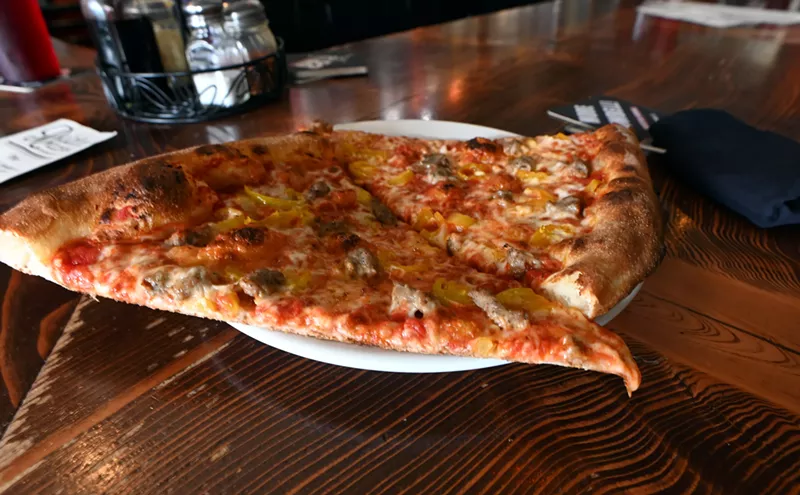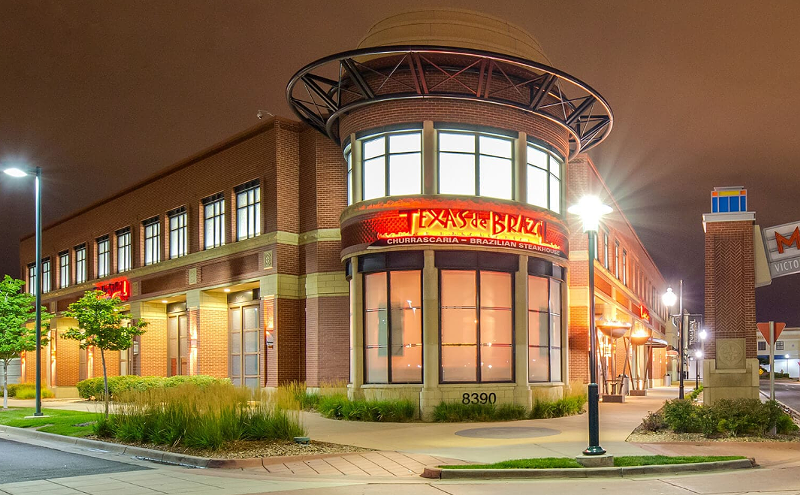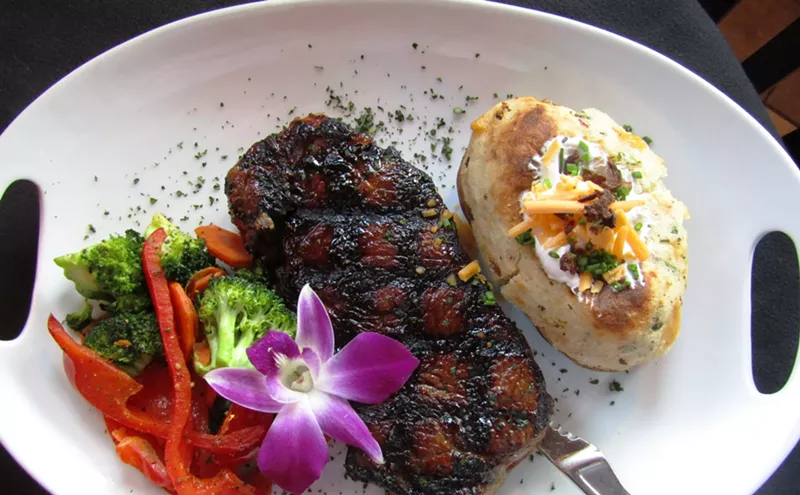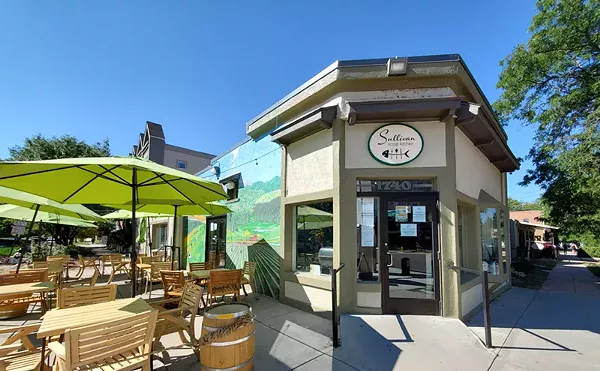Driving east along Colfax Avenue from downtown is a bit like journeying from Denver south through Central America. As you leave the modern, redeveloped blocks and head past Colorado Boulevard, the population thins and the scenery becomes a little more gritty. But diversity grows, with a patchwork quilt of international markets, coffee shops and restaurants. Trendy Mexican restaurants give way to regional specialists from less traveled parts of Mexico and then to a scattering of Salvadoran pupuserias. Then, as you cross into Aurora at Yosemite Street, you’ll pass a Guatemalan bakery before noticing — if you’ve got your eyes peeled — Antojitos Hondureños, the metro area’s only Honduran restaurant (unless a nightclub called Lempira that hasn’t been answering its phone still serves food).
I must admit that I breezed by the tiny Honduran joint several times before I even spotted the sign — and then passed it up several more times before I decided to go in. Like many of its neighbors along this decidedly un-gentrified stretch of the area’s longest street, Antojitos Hondureños holds little visual appeal from the outside, even though it looks tidy enough, whitewashed and glaring in the Colorado sun (with its Grecian-blue sign, it has an almost Mediterranean feel). The restaurant is tucked into the right-hand side of what may have been a Taco Bell at one time; now a wall splits the building in two, with a Boost Mobile shop occupying the left side. The inside is tidy, too, the dining room decorated with Honduran tourism posters. But most Taco Bell dining rooms aren’t exactly spacious, and cutting this one in half left room for only eighteen chairs and a small order window. There’s not even a door to the kitchen, making it impossible for the crew to deliver food or clean up tables without using a side door in the small entry foyer. And since menus are tucked next to a napkin holder on the counter, ordering becomes a crowded dance with anyone who happens to be ahead of you in line. (On my most recent visit, it was a woman with a to-go order whose credit card had to be run several times before it was finally accepted; I was mere seconds from offering to pay for her meal, if only so that I could order my own.)
The food of Honduras has been shaped by its history, beginning with the indigenous ingredients used by descendants of Mayan and other native cultures and picking up European influences from the Spanish conquest. Caribbean cooking came with slaves and laborers brought to work on vast commercial plantations that functioned nearly as autonomous entities after the country gained independence in the early 1800s. For more than a century, exploitative agriculture held sway, leading writer O. Henry to coin the phrase “banana republic” to describe the economy of Honduras. Most of the money generated on tropical fruit farms was funneled out of the region, leaving native Hondurans to fend for themselves.
As a result, those natives lived on simple, hearty fare, from street-food snacks like baleadas and pastelitos to home-style stews and soups — at least as represented on the Antojitos Hondureños menu. Caribbean ingredients show up in a number of dishes, including plátanos fritos (fried plantain), chicken served with tajadas de guineo (fried green banana), and yuca root with chicharrón. Salvadoran pupusas are popular throughout Central America and make an appearance here, too. Honduras was also briefly a part of the Mexican Empire (which for just a few years stretched from what is now the southwestern United States all the way to Costa Rica), and that Mexican influence can be seen in tacos Hondureños (which are rolled and fried), enchiladas (served open-faced rather than rolled) and carne asada.
Familiar-looking baleadas are built on thick, housemade flour tortillas and fall somewhere between a burrito and a taco. The regular baleada — a Honduran breakfast staple — is filled with nothing more than beans, cheese and crema, while the especial adds beef, a fried egg and avocado. While the word “baleada” doesn’t have an equivalent in Mexican cooking, the phrase “morir baleada” translates from Spanish as “shot dead,” unfortunate considering Honduras’s reputation for gun violence. More likely, though, is that the name derives from bullet-shaped beans called balas common in Central American cooking. The pastelitos are similar to empanadas but made with corn flour tinted orange-yellow with annatto seed or other spices. These are filled with a simple mixture of ground beef and white rice and served with a side of pickled red cabbage and a mild tomato-based sauce, neither of which carries any chile-based heat. They’re best eaten hot, as the tender corn-flour pocket quickly soaks up the sauce and becomes soggy.
Honduran cuisine doesn’t come up much (or at all, truthfully) in discussions of the hottest international trends, but the food of this tiny country casts a light on the evolution and migration of cooking in the Western Hemisphere in general. History lesson aside, a plate of fried plantain or yuca and a $5 baleada especial make a satisfying mid-day meal. Whether you’re a fan of hard-to-find Latin American specialties or simply a Colfax Avenue completist, Antojitos Hondureños is worth a stop.

Audio By Carbonatix
[
{
"name": "GPT - Billboard - Slot Inline - Content - Labeled - No Desktop",
"component": "23668565",
"insertPoint": "2",
"requiredCountToDisplay": "2"
},{
"name": "STN Player - Float - Mobile Only ",
"component": "23853568",
"insertPoint": "2",
"requiredCountToDisplay": "2"
},{
"name": "Editor Picks",
"component": "17242653",
"insertPoint": "4",
"requiredCountToDisplay": "1"
},{
"name": "Inline Links",
"component": "18838239",
"insertPoint": "8th",
"startingPoint": 8,
"requiredCountToDisplay": "7",
"maxInsertions": 25
},{
"name": "GPT - 2x Rectangles Desktop, Tower on Mobile - Labeled",
"component": "24956856",
"insertPoint": "8th",
"startingPoint": 8,
"requiredCountToDisplay": "7",
"maxInsertions": 25
},{
"name": "Inline Links",
"component": "18838239",
"insertPoint": "8th",
"startingPoint": 12,
"requiredCountToDisplay": "11",
"maxInsertions": 25
},{
"name": "GPT - Leaderboard to Tower - Slot Auto-select - Labeled",
"component": "17676724",
"insertPoint": "8th",
"startingPoint": 12,
"requiredCountToDisplay": "11",
"maxInsertions": 25
}
]











